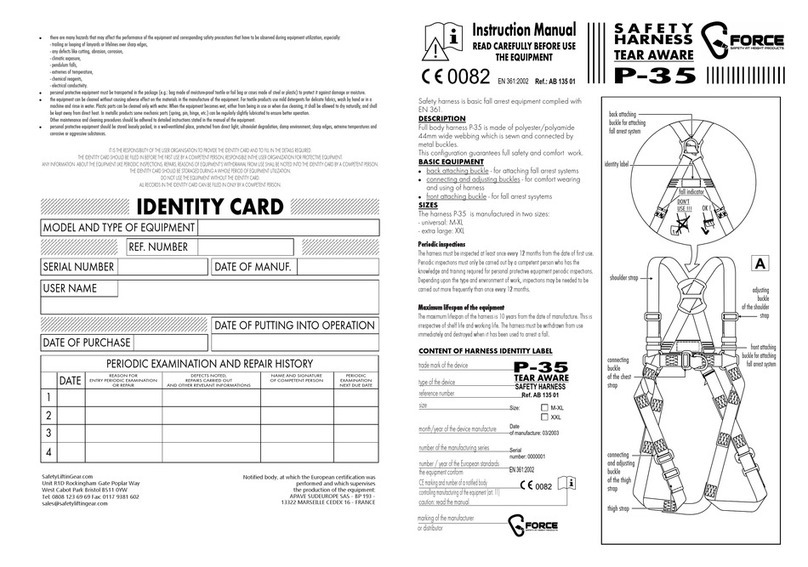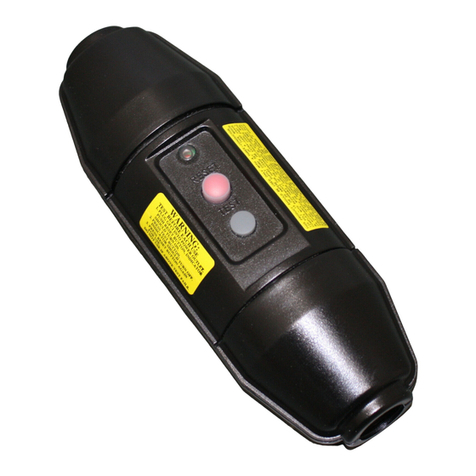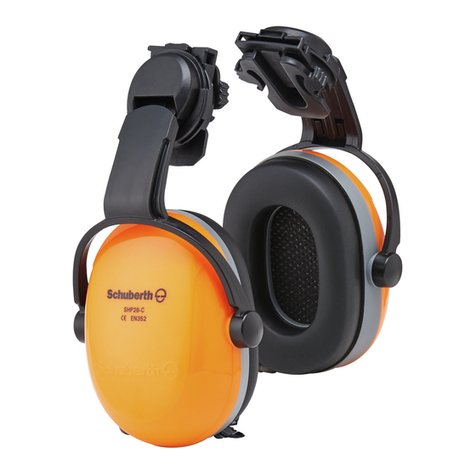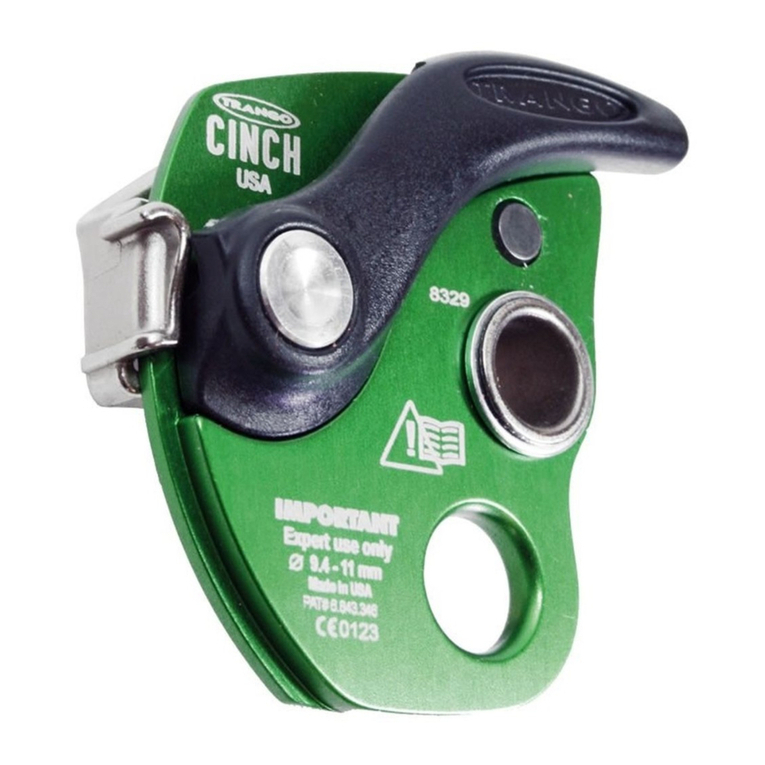
-3-
Fig.5
VI. Installation and debugging
Determine the location, mounting distance and numbers for mounting the detectors in the protection
area according to relevant provisions and regulations of the Design of Automatic Fire Alarm System and
the Installation andAcceptance of Fire Alarm System.
A self-contained complete base is necessary during the installation of a detector. As shown in Fig.5, the
model, the external dimensions, the mounting hole diameter and the mounting hole spacing of the base
are DZ-912, Ф100mm×26.4mm (diameter×thickness), Ф4.5mm and 44.5mm~64.3mm respectively.
CD
B
Wiring requirement:
It is proper to use RVS twisted pairs with a section area of equal to or larger than 1.0mm2 for the signal
buses L1 and L2.
Specific installation and debugging methods:
1. Make sure the type of the detector matches the type of the host machine of the fire alarm
control panel;
2. Use two M4 screws to fix the matched mounting base on the designated position via the
mounting holes C and D shown in Fig.6, as instructed in the construction drawing and make
sure the matched mounting base has been firmly installed.
3. Use a coder to make the detector coded according to the detector address on the construction
drawing.
4. Disconnect the power supply of the fire alarm control panel and connect the detector correctly
according to the construction drawing.
5. The lower edge of the detector base raised position aligned with the groove position, and then
the detector into the base, the detector clockwise until it locks into place the detector;
6. After all the products are installed and checked, connect the power supply of the fire alarm
control panel and conduct automatic login.
7. When automatic login is success, the red indicator of the detector will blink once about every 12
seconds, which suggests that the detector has begun to operate normally.
8. Finally conduct an alarm test for the detector through some special tools or direct smoke
blowing. After the detector gives a fire alarm, the indicator will remain lit and the fire alarm
control panel will simultaneously show corresponding alarm prompt information. After the alarm
Fig.6
-4-
test, reset the fire alarm control panel and restore to the monitoring status.
II. Precautions
1. A detecto
can not share an address with othe
equipment in a single bus circuit, o
else an
address conflict ma
occur.
2. Neve
dismount the protective cove
delivered with the detecto
too earl
afte
the field
installation and before the use of the detector, o
else the detecto
ma
be contaminated.
3. The protection area and quantit
of the detectors should compl
with relevant provisions in the
Design of
utomatic Fire
larm S
stem and the Installation an
cceptance of Fire
larm
S
stem.
VIII. Maintenance
Warnin
: Before conductin
maintenance for detectors, inform the related mana
ement
department that the monitorin
will be stopped temporaril
when the s
stem maintenance.
Meanwhile, disable the lo
ic control function o
theareaors
stem to be maintained to avoid
unnecessar
alarm linka
e.
fter the test, inform the mana
ement department to restore the
normal functions o
the s
stem.
1. Fo
a detector, at least semi-annual tests should be done accordin
to related
rovisions of the
Installation an
cce
tance of Fire
larm S
stem;fo
a detecto
that has been installed and used, it
is recommended to have it cleaned and maintained once ever
two
ears.
2. O
eratin
environment has a
reat influence on the
erformance of the detector. If the detecto
is
installed and used in a
lace where its normal use is easil
affected b
dust, hi
hwinds
eed and
othe
factors, its maintenance
eriod should be shortened.
3. If a detecto
fails due to a material defect o
a manufacturin
rocess defect unde
normal
conditions of use in one
ea
followin
the date of its deliver
, we shall re
ai
o
re
lace it fo
free.
However, the faults of the detecto
due to artificial dama
e, im
ro
e
use, o
authorized ad
ustment,
reconstruction o
disassembl
are not covered in the
uarantee and we shall assume no
responsibilities fo
an
the consequence thereb
caused.
4. We ma
provide paid repai
service fo
products with an
faults be
ond the
uarantee ran
e. If
ou
have such products that need repair, please contact us. When sendin
such a product to us fo
re
air,
ou are ex
ected to
rovide some im
ortant information about the
roduct, such as the
henomenon and
ossible cause of the
roduct fault, so that we can find out the cause of the fault
in the shortest time and so the information ma
be used as a reference in ou
future
roduct
develo
ment and im
rovement.
IX. Fault analysis and troubleshooting
Fault Possible cause Troubleshootin
method Remarks
The detecto
can’t be
coded. The internal circuit is dama
ed. Send the detecto
back to the factor
fo
re
air.
The detecto
can’t be
lo
ed into normall
.The detecto
has no address o
has a coincident address. Recode the detecto
address.
The detecto
re
orts a
fault afte
lo
in.
The senso
has failed. Send the detecto
back to the factor
fo
re
air.
The lab
rinth is seriousl
contaminated. Clean the lab
rinth o
the detecto
.
The detecto
re
orts a
fire alarm afte
lo
in.
There is a
reat deal o
smoke
dust o
steam in the room. Lo
in a
ain afte
the smoke, dust o
the
steam is eliminated.
The internal circuit has failed. Send the detecto
back to the factor
fo
re
air.
The lab
rinth is seriousl
contaminated. Clean the lab
rinth o
the detecto
.
The detecto
cannot
o
erate normall
afte
bein
owered u
.
The indicato
o
the internal circuit
is dama
ed. Send the detecto
back to the factor
fo
re
air.
The contact with the base is
oor. Ins
ect and reinstall the base.
The detecto
can’t
send out fire alarm
si
nal durin
an alarm
test. The internal circuit is dama
ed. Send the detecto
back to the factor
fo
re
air.
Address:3F, Guangcai New World Building, Nanshan Road, Nanshan District, Shenzhen, 518054, P.R.China
Tel:+86(755)86226969 Fax::+86(755)86223939 Http://www.fhsjdz.com




















